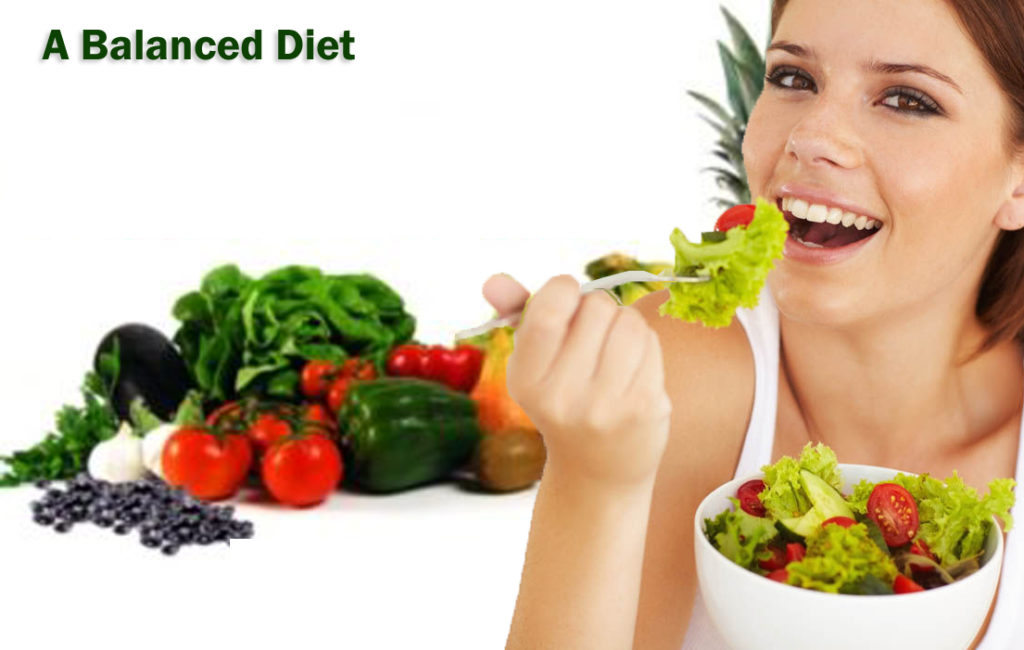Your body needs a certain set of nutrients to function efficiently. If the body doesn’t receive these nutrients, it can develop deficiencies, health problems, and lead to an unhealthy lifestyle. This is especially true if the daily diet consists of unhealthy processed or fast food items. Without a well-balanced diet, people can feel fatigued, weak, have difficulties focusing, gain excessive weight, lose excessive weight, and face other such problems.

What is a Balanced Diet?
A well-balanced diet contains healthy ingredients, is filling, and ensures your body gets all the nutrition it needs to thrive. A person should get most of their calories from nutrient-rich food items like:
- Fresh fruits (not canned, sweetened, or filled with preservatives)
- Fresh vegetables
- Whole grains (wheat, rice, quinoa, buckwheat, etc.)
- Legumes (lentils and seeds)
- Nuts (almonds, cashews, walnuts, peanuts, etc.)
- Lean meats (chicken, seafood, leaner cuts, etc.)
You can incorporate all of these good ingredients into your daily diet with simple, quick recipes. It is also possible to have a balanced diet with different lifestyles like Veganism, Vegetarianism, Gluten-free, etc.
How to Follow a Balanced Meal Plan
It’s very easy to follow a basic healthy meal plan. The plate method is a simple, efficient way to determine if your food is well-balanced. The Government of Canada provides a printable “Eat Well Plat” diagram that people can pin to their fridge. Here’s a look at what a balanced meal plate will look like:
1. Half of the Plate is Fruits and Vegetables
If your meal is dominated by fruits and vegetables, it will be healthier than other alternatives. Eat more vegetables than fruit, more whole fruit, and vegetables than juices, and add a few raw vegetables to your diet. Dark leafy greens are the most nutritious vegetables, followed by dark colored options like beets, carrots, and the orange vegetables like squash, pumpkins, etc.
If you are forced to use canned vegetables, drain and wash them before incorporating them in your food. This will remove most of the salt and preservatives. Choose frozen fruits and vegetables that have no additives in them for the most nutritious meal.
2. Quarter of the Plate for Protein
A quarter portion of your plate should include protein and this comes from various sources. Meat is the easiest source of protein and can be a healthy addition to your diet if you choose lean meats and eat small portions. Even a small amount of lean meat is very filling so you don’t need a large steak to feel satisfied, especially if you follow this plate plan.
Fish like char, mackerel, herring, salmon, sardines, etc., are a healthy addition to any meal. They don’t just provide good protein, but also offer Omega-3 fats. This improves heart health.
Vegans and vegetarians can find ample protein from reasonably-sized portions of beans and lentils. Incorporate chickpeas, split peas, black beans, kidney beans, lentils, tofu, edamame, etc., to your meal, and your diet will be well-balanced.
3. Grain Products in the Last Quarter
Grains provide carbohydrates and these nutrients are essential. They provide fuel to your body and help you remain active. Consuming reasonable portions of carbs won’t harm your health or cause you to gain excessive weight. You can incorporate grains like brown rice, barley, buckwheat, wild rice, oats, and quinoa into your diet.
Choose whole grain bread, pita bread, flatbreads, and bagels instead of croissants, pastries, or doughnuts. Whole grain flour contains more nutrients than refined white flour.
In addition to this, drink plenty of water throughout the day and choose unflavored, unsweetened water over carbonated drinks or juices. Add milk and alternatives to for calcium and healthy oils like Olive oil to your diet.








